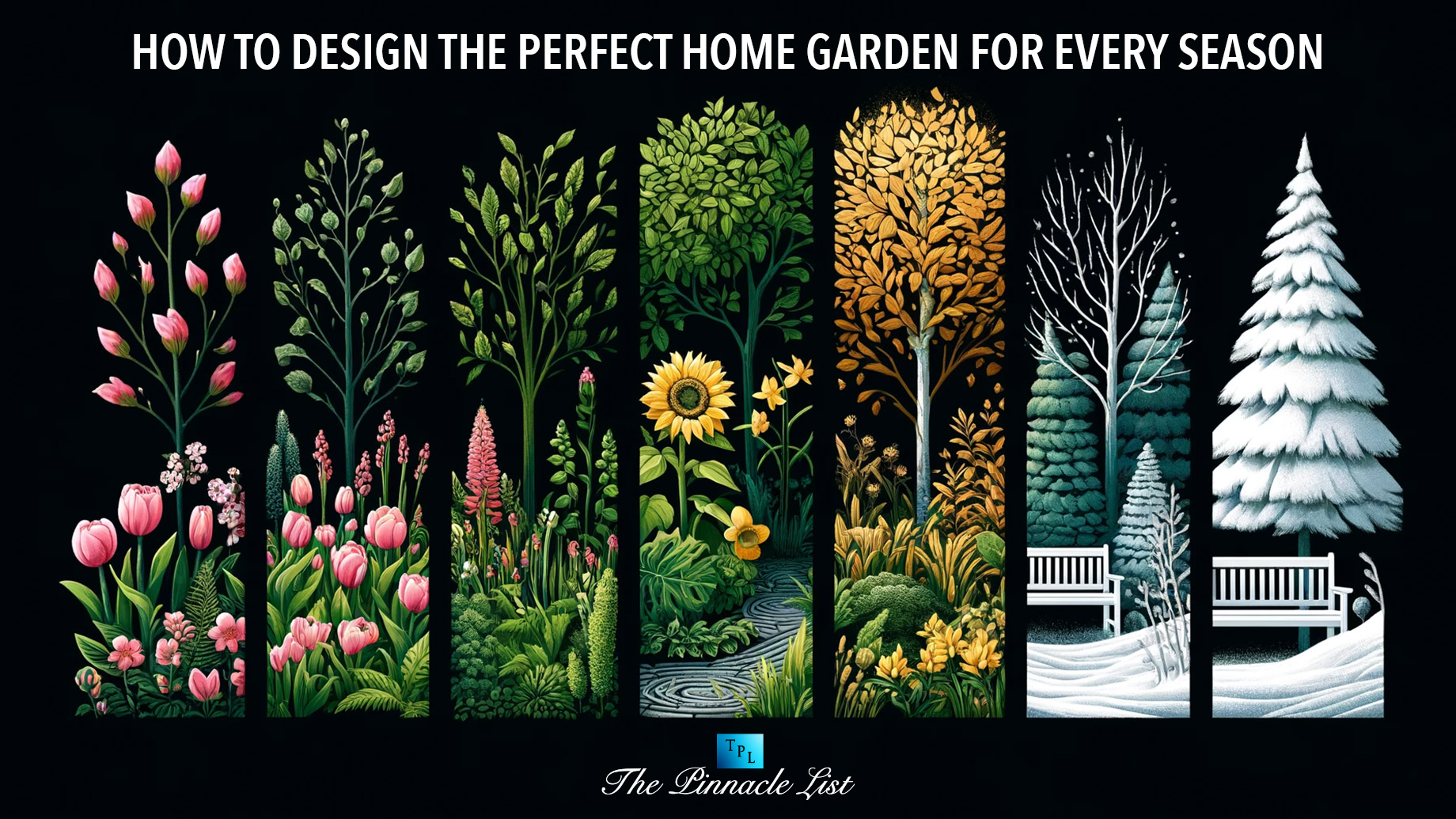
A beautifully designed home garden can provide year-round enjoyment, with each season offering its own unique charms. By carefully selecting plants and incorporating hardscaping elements, you can create an outdoor oasis that evolves with the changing seasons. Here are some tips for designing the perfect home garden for spring, summer, fall, and winter.
Spring Garden Design
Spring is a time of renewal and growth in the garden. To make the most of this invigorating season:
- Plant spring-flowering bulbs like tulips, daffodils, and hyacinths in the fall for a burst of early colour.
- Include flowering trees and shrubs such as lilacs, rhododendrons, azaleas, forsythia, and witch hazel for spectacular spring blooms.
- Use evergreen hedges and shrubs to provide structure and a lush backdrop for emerging spring growth.
- Add pops of colour with cool-season annuals like pansies, violas, and primrose in containers or borders.
Summer Garden Splendor
In summer, the garden is in its prime. Bask in the beauty of the season with these design ideas:
- Create an inviting seating area to relax and enjoy the lush surroundings. Position benches or chairs near fragrant plantings.
- Plant summer-blooming perennials like coneflowers, black-eyed susans, daylilies, and salvias for vibrant colour.
- Incorporate ornamental grasses to add texture, movement, and visual interest.
- Grow climbing vines like clematis or honeysuckle on trellises or arbours for vertical appeal.
- Plant herbs and vegetables to enjoy fresh summer harvests. Tomatoes, peppers, and basil thrive in the heat.
Fabulous Fall Foliage
Fall is a time to celebrate the changing colours of the landscape. Highlight the beauty of the season with these tips:
- Select trees and shrubs with outstanding fall colours, such as Japanese maples, burning bushes, dogwoods, and oakleaf hydrangeas.
- Allow perennials with attractive seed heads, like coneflowers and ornamental grasses, to remain for fall and winter interest.
- Plant fall-blooming perennials like asters, mums, and sedums for late-season colour.
- Use fallen leaves as natural mulch on planting beds. Their rich hues enhance the autumnal aesthetic.
Wonderful Winter Interest
With some thoughtful planning, the garden can still shine in winter’s quiet beauty:
- Incorporate evergreen trees and shrubs to provide structure, colour, and shelter for wildlife.
- Select plants with interesting bark, such as red twig dogwoods, paper bark maple, and river birch, for eye-catching texture.
- Include winter-blooming shrubs like witch hazel and hellebores for subtle colour.
- Use hardscaping elements like benches, arbours, and decorative fences as focal points.
- Hang bird feeders to attract feathered friends and add life to the winter garden.
By designing with all four seasons in mind, you can create a home garden that offers year-round beauty, interest, and enjoyment. Consult with a landscape designer to help bring your perfect four-season garden to life.